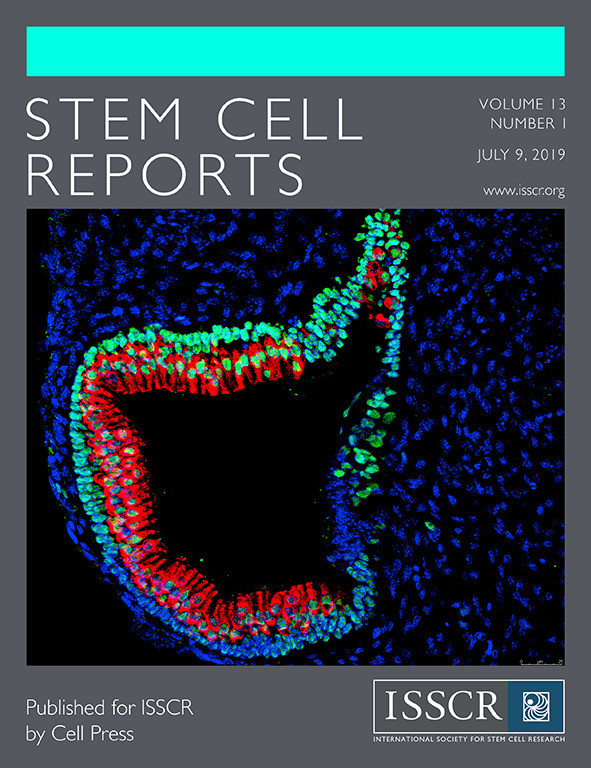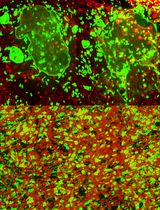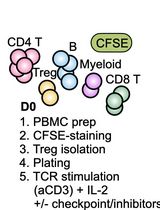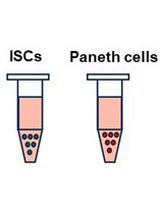- EN - English
- CN - 中文
A Modified Semisolid Clonal Culture for Identification of B-1 and B-2 Progenitor Colony Forming Ability of Mouse Embryonic Hemogenic Endothelial Cells
改良半固态克隆培养鉴定小鼠胚胎造血内皮细胞B-1和B-2祖细胞集落形成能力
发布: 2020年05月05日第10卷第9期 DOI: 10.21769/BioProtoc.3601 浏览次数: 4125
评审: Giusy TornilloWoojong LeeAnonymous reviewer(s)
Abstract
The search for the origin of the first hematopoietic stem cells (HSCs) in the mouse embryo has been a hot topic in the field of developmental hematopoiesis. Detecting lymphoid potential is one of the supportive evidence to show the definitive hematopoietic activity of HSCs. However, the first B-lymphoid potential in the mouse embryos are reported to be biased to innate-like B-1 cell lineage that can develop from hemogenic endothelial cells (HECs) independently of HSCs. On the other hand, conventional adaptive immune B cells (B-2) cells are considered to be exclusively derived from HSCs. Therefore, segregating B-1 and B-2 progenitor potential is important to understand the developmental process of HSCs that are also produced from HECs through intermediate precursors referred to as pre-HSCs. Both HECs and pre-HSCs show endothelial surface phenotype and require stromal support to detect their hematopoietic activity. The method utilizing stromal cell culture followed by modified semisolid clonal culture enables us to detect the number of colony forming units for B-1/B-2 progenitors originally derived from HECs/pre-HSCs, which will reflect the potential of B-1 biased or multi-lineage repopulating HSCs.
Background
Semisolid clonal culture (methylcellulose colony forming assay) is a traditional method to detect the number of hematopoietic progenitor cells. One colony is considered to be derived from a single progenitor cell (clonal origin). Added cytokines play important roles in the formation of yield colonies. For example, Epo enhances the colony forming unit of erythrocytes (CFU-E) or the burst forming unit of erythrocytes (BFU-E), while G-CSF/GM-CSF will enhance CFU-G (Granurocytes), M (Macrophages) or GM (Granulo-macrophages). SCF stimulate hematopoietic progenitor activity. The formation of B-lymphocyte progenitor colonies from mouse BM requires SCF, IL-7 and Flt3-ligand. Importantly, this assay can detect only the activity of CD45+ (or CD41+ in case of embryo-derived cells) hematopoietic progenitor cells, thus, cannot detect the hematopoietic activity of CD45-CD144+ hemogenic endothelial cells (HECs) that produce various hematopoietic cells in the mouse embryo. The detection of hematopoietic activity of HECs heavily depends on the stromal support or organ culture method. Therefore, it is challenging to determine the number of lymphoid progenitors produced from HECs. Recently, Montecino-Rodriguez et al. (2016) developed a modified semisolid clonal culture using S-17 stromal cells to detect B-1 and B-2 potential of hematopoietic progenitors in embryonic (E) day 10 yolk sac cells and fetal liver cells.
B-1 progenitor cells are mainly detected in the fetal liver and neonatal BM. B-1 cells belong to innate-like B-lymphocytes that produce natural IgM antibodies, while conventional adaptive immune B cells are referred to as B-2 cells. Montecino-Rodriguez et al., identified B-1 cell-specific progenitors in the mouse fetal liver and neonatal BM as lin-IgM-CD19+B220- (CD19 single positive) cells whereas B-2 specific progenitors (Pro-B cell) are lin-IgM-CD19-B220+ (B220 single positive) cells. These two populations quickly become CD19+B220+ double positive in vitro culture, thus, it is difficult to determine if B cells produced from embryonic tissues in the co-culture with stromal cells belong to B-1 or B-2 cells. This modified semisolid clonal culture enables us to detect B-1 and/or B-2 progenitor colonies derived from HECs/pre-HSC by utilizing stromal cells that support B lymphopoiesis (Kobayashi et al., 2019). We used OP9 stromal cells to support B-lymphopoiesis in the semisolid clonal culture, with which we have been successful to induce B lymphocytes from HECs (Yoshimoto et al., 2011; Kobayashi et al., 2019). Since B-2 progenitor colony forming ability seems to be one of the HSC activity, this method may be utilized to evaluate the HSC activity derived from HECs/pre-HSCs in the mouse embryo.
Materials and Reagents
- T-25 culture Flask (Corning, catalog number: 353109 )
- 6-well culture plates (Corning, Costar, catalog number: 3516 )
- 96-well Flat culture plates (Corning, Costar, catalog number: 3595 )
- Falcon Round bottom polypropylene14 ml tube (Corning, catalog number: 352059 )
- 1.5 ml Eppendorf tube
- 35 mm Petri dish (Falcon, catalog number: 351008 )
- 15 mm Petri dish
- 3 ml syringe (BD, catalog number: 309657 )
- 5 ml syringe
- 18 G needles (BD, catalog number: 305185 )
- 10 μl pipette tip
- Bottle top filter system (0.22 μm pore size)
- C57BL/6 male and females
- α-MEM (powder) (Gibco, catalog number: 11900-024 )
- Fetal Bovine Serum
Note: We used FBS from Atlanta Biological for this publication. However, we always perform lot check from 5-10 test FBS samples to find the best FBS for OP9 maintenance culture. We usually purchase 20 bottles to maintain the same equality of experiments for 2-3 years. - Fresh Milli-Q water
- PBS (Fisher Scientific, catalog number: BP665-1 )
- 2-Mercaptoethanol (Fisher Scientific, catalog number: O3446I-100 )
- 500 mM EDTA pH 8.0
- IMDM (Gibco, catalog number: 12440061 )
- Heparin (Sigma, catalog number: H3149-100KU )
- Endothelial mitogen 50 mg (Biomed Tech, catalog number: BT-203 )
- Penicillin-Streptomycin 10,000 U-10,000 µg/ml (Gibco, catalog number: 15140122 )
- X-VIVO 20 (Lonza, catalog number: 04-448Q )
- Methylcellulose-base medium for mouse pre-B lymphoid progenitor cells (Stemcell Technologies, MethocultTM, catalog number: M3630 )
- Recombinant murine IL-7 (Peprotech, catalog number: 217-17 )
- Recombinant murine Flt3-ligand (Peprotech, catalog number: 250-31L )
- 0.05% Trypsin/EDTA (Gibco, catalog number: 25300054 )
- 0.25% Collagenase Type I (Stemcell Technologies, catalog number: 0 7902 )
- DNase I Solution (1mg/ml) (Stemcell Technologies, catalog number: 0 7900 )
- Cell Dissociation Buffer (Hank’s balanced) (Gibco, catalog number: 13150-016 )
- Antibodies for sorting and detecting B cell colonies (Table 1)
Table 1. Antibody list for flow cytometry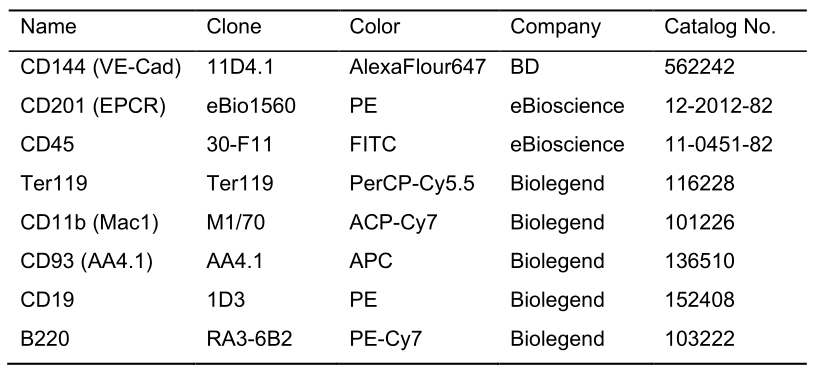
- OP9 stromal cells [obtained from Dr. Shin-Ichi Nishikawa (retired from Riken, Kobe, Japan), can be obtained from ATCC CRL-2749 (ideally < 30 passage)]
- Akt-expressing AGM-ECs (AGM-ECs): endothelial cells (ECs) obtained from aorta-gonod-mesonephros (AGM) region in the mouse embryo was established and induced Akt-overexpression by Dr. Brandon Hadland, Fred Hutchinson Cancer Center, Seattle, USA) (Hadland et al., 2015)
- Gelatin from porcine skin (Sigma, catalog number: G1890 )
- α-MEM (see Recipes)
- 2-mercaptoethanol (2-ME) stock (0.1 M) (see Recipes)
- OP9 maintenance medium (α-MEM + 20% FBS) (see Recipes)
- AGM-EC maintenance medium (see Recipes)
- Differentiation medium (α-MEM +10% FBS + 5 x 10-5 M 2ME) (see Recipes)
- Staining buffer (PBS + 5% FBS + 2 mM EDTA) (see Recipes)
- 0.1% Gelatin (see Recipes)
Equipment
- P1000 pipette
- Microcentrifuge
- FACS Sorter and analyzer with more than 6 fluorescent detectors are required. We used BD FACSAria for cell sorting, BD LSRII and BD LSR-Fortessa for analysis
- Standard cell culture CO2 incubator (CO2: 5%, O2: 20%)
Procedure
文章信息
版权信息
© 2020 The Authors; exclusive licensee Bio-protocol LLC.
如何引用
Kobayashi, M. and Yoshimoto, M. (2020). A Modified Semisolid Clonal Culture for Identification of B-1 and B-2 Progenitor Colony Forming Ability of Mouse Embryonic Hemogenic Endothelial Cells. Bio-protocol 10(9): e3601. DOI: 10.21769/BioProtoc.3601.
分类
发育生物学 > 细胞生长和命运决定 > 分化
干细胞 > 胚胎干细胞 > 基于细胞的分析方法
细胞生物学 > 细胞分离和培养 > 共培养
您对这篇实验方法有问题吗?
在此处发布您的问题,我们将邀请本文作者来回答。同时,我们会将您的问题发布到Bio-protocol Exchange,以便寻求社区成员的帮助。
Share
Bluesky
X
Copy link


